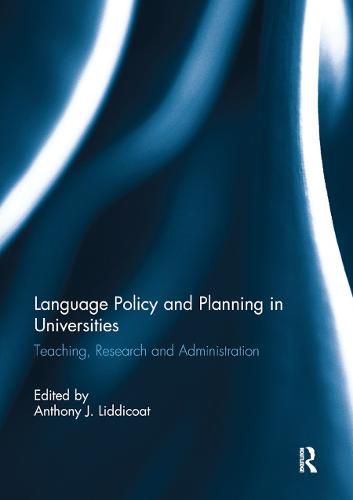Readings Newsletter
Become a Readings Member to make your shopping experience even easier.
Sign in or sign up for free!
You’re not far away from qualifying for FREE standard shipping within Australia
You’ve qualified for FREE standard shipping within Australia
The cart is loading…






In a world where higher education is increasingly internationalised, questions of language use and multilingualism are central to the ways in which universities function in teaching, research and administration. Contemporary universities find themselves in complex linguistic environments that may include national level language policies, local linguistic diversity, an internationalised student body, increasing international collaboration in research, and increased demand for the use and learning of international languages, especially English.
The book presents a critical analysis of how universities are responding these complexities in different contexts around the world. The contributions show that language issues in universities are complex and often contested as universities try to negotiate the national and the international in their work. In some contexts, universities’ language policies and the ways in which they are implemented may have a negative impact on their ways of working. In other contexts, however, universities have embraced multilingualism in ways that have opened up new academic possibilities for staff and students. Collectively, the chapters show that universities’ language policy and planning are a work in progress and that much further work is needed for universities to achieve their language goals. This book was originally published as a special issue of Current Issues in Language Planning.
$9.00 standard shipping within Australia
FREE standard shipping within Australia for orders over $100.00
Express & International shipping calculated at checkout
In a world where higher education is increasingly internationalised, questions of language use and multilingualism are central to the ways in which universities function in teaching, research and administration. Contemporary universities find themselves in complex linguistic environments that may include national level language policies, local linguistic diversity, an internationalised student body, increasing international collaboration in research, and increased demand for the use and learning of international languages, especially English.
The book presents a critical analysis of how universities are responding these complexities in different contexts around the world. The contributions show that language issues in universities are complex and often contested as universities try to negotiate the national and the international in their work. In some contexts, universities’ language policies and the ways in which they are implemented may have a negative impact on their ways of working. In other contexts, however, universities have embraced multilingualism in ways that have opened up new academic possibilities for staff and students. Collectively, the chapters show that universities’ language policy and planning are a work in progress and that much further work is needed for universities to achieve their language goals. This book was originally published as a special issue of Current Issues in Language Planning.